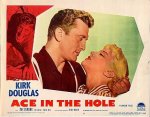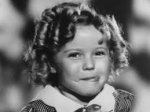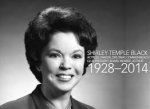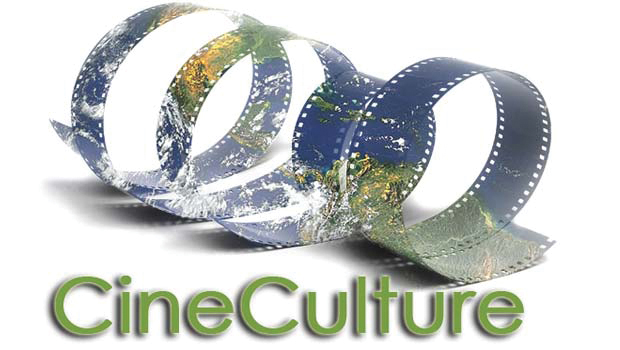Revenge of the Sequel by Keefer C. Blakeslee
Tuesday, May 31st, 2016 A sequel blog to a remake blog? It sounds like a paradox. For those of you who don’t remember, my last blog discussed remakes and looked at them from a more positive point of view. I thought it would be fitting to talk about another one of Hollywood’s quick cash schemes – the sequels and prequels. You all know them, the continuation or back story to a film that has already been made. Now, I don’t particularly dislike sequels as much as remakes. There are some cases of necessary extension of a film’s story. Indiana Jones (not including Crystal Skull) still kept its charm with each new installment. Each Back to the Future film had enough comedy and adventure to make audiences come back to the theater. Finally, who can forget the Toy Story trilogy. This group of films got better and better as time went on.
A sequel blog to a remake blog? It sounds like a paradox. For those of you who don’t remember, my last blog discussed remakes and looked at them from a more positive point of view. I thought it would be fitting to talk about another one of Hollywood’s quick cash schemes – the sequels and prequels. You all know them, the continuation or back story to a film that has already been made. Now, I don’t particularly dislike sequels as much as remakes. There are some cases of necessary extension of a film’s story. Indiana Jones (not including Crystal Skull) still kept its charm with each new installment. Each Back to the Future film had enough comedy and adventure to make audiences come back to the theater. Finally, who can forget the Toy Story trilogy. This group of films got better and better as time went on.
I have to say that I am a sucker for prequels. I love the idea of taking a film’s story or character and pushing rewind to see how it all started. Red Dragon managed to give an equally thrilling experience from its predecessor Silence of the Lambs. Audiences saw how Hannibal Lecture was captured and the relationship between him and the man who caught him. One of my favorite prequels is X-Men: First Class. Not only is this film strong enough to be its own film but we’re also exposed to Professor X and Magneto’s original friendship, turned rivalry. That’s what makes a good sequel and prequel. Being able to regain the same essence that made people love the original or, better yet, add something new that makes people love the story even more.
 All of these are examples of films with good sequels or prequels. Where are the bad eggs and what makes them rotten? Most prequels and sequels that get negative responses happen because they’re unnecessary. Do we really need four Alvin
All of these are examples of films with good sequels or prequels. Where are the bad eggs and what makes them rotten? Most prequels and sequels that get negative responses happen because they’re unnecessary. Do we really need four Alvin
and the Chipmunks films? One was enough. Back to the Hannibal Lecture trend, Hannibal Rising is a non-essential prequel that killed the mystery of one of cinema’s most terrifying characters. Audiences don’t ask for films such as this and yet, studios keep pushing them out. Films like these make moviegoers and film buffs continue to believe that Hollywood is running out of ideas.
While we can point the finger at studio executives, we need to understand that certain audiences contribute to the sequel and prequel madness. They say, “I loved Frozen and ‘Let it Go.’ I want more Elsa.” “Wow, how did Anakin Skywalker turn to the dark side?” A lot of the time audiences want to see and ask for more. I’m not saying we are to blame but we are not completely innocent. When producers or studio board members get a pulse that they’re making a lot of money from a film, they want to see how long they can drag it out. Example, “We made a lot of money with Lord of the Rings, let’s see if we can take The Hobbit and make it into three films and make more money.” I understand that’s a cynical way of looking at it and I’m sure filmmakers are not purposefully trying to make poor sequels and prequels but when they seemed forced and redundant they come across that way.
Should we stop asking for more? Of course not. There are films that many people want to see continued. I’ve personally been waiting for another Incredibles film or maybe see the back story for The Matrix. Sequels and prequels aren’t all bad. They just need to be created naturally instead of forced.














 I saw The Witch yesterday and it started me thinking about what makes a great horror film. There are two primary elements that make up a horror film: shock and suspense. Some horror films are only shock and some are only suspense. The best films incorporate both. Hitchcock said that good suspense is created when the viewer is informed of the impending doom and is complicit in the action. He felt suspense was the more important element because one can close one’s eyes and still feel the spine tingling horror of anticipation. But a viewer can close his or her eyes at the jump scares and not really feel anything.
I saw The Witch yesterday and it started me thinking about what makes a great horror film. There are two primary elements that make up a horror film: shock and suspense. Some horror films are only shock and some are only suspense. The best films incorporate both. Hitchcock said that good suspense is created when the viewer is informed of the impending doom and is complicit in the action. He felt suspense was the more important element because one can close one’s eyes and still feel the spine tingling horror of anticipation. But a viewer can close his or her eyes at the jump scares and not really feel anything.

 rofessional films have a huge number of people working together to make the production come to life. Usually, the number people involved in a feature story production is around 500, but some films stick out. For example, Iron Man 3 listed credits for over 3,000 people – the size of a small town – who contributed in making this two-hour film. Have you ever asked yourself the question, “Who is the center of that large crowd? Who makes it all happen?”
rofessional films have a huge number of people working together to make the production come to life. Usually, the number people involved in a feature story production is around 500, but some films stick out. For example, Iron Man 3 listed credits for over 3,000 people – the size of a small town – who contributed in making this two-hour film. Have you ever asked yourself the question, “Who is the center of that large crowd? Who makes it all happen?”

